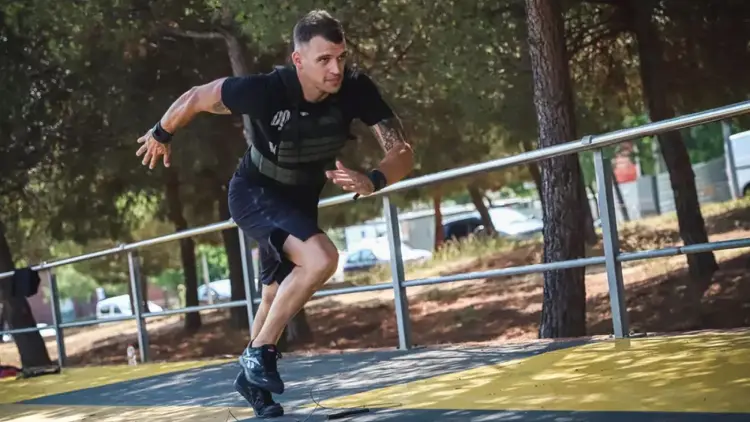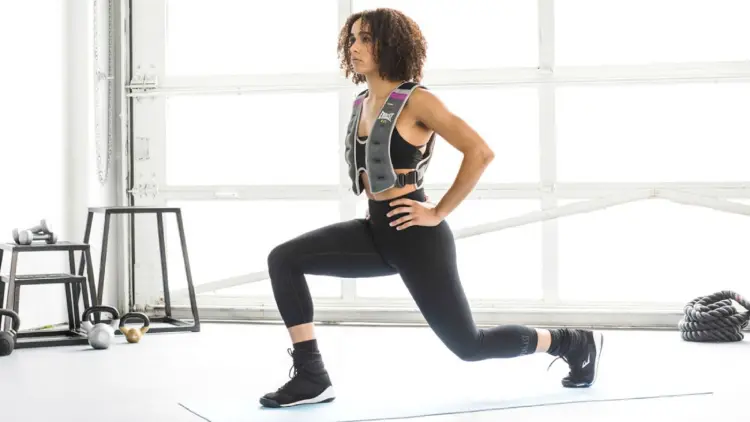A weighted vest is what you need to reach goals in running. While weighted vests might not suit everyone, wearing something to add weight while exercising can help you boost your fitness, gain muscle and strength, make your bones stronger and increase the pressure during cardio workouts, making your endurance better. Wearing a vest on your runs can help train your muscles, allowing you to run farther and faster during marathons.
Running while wearing a weighted vest
Pros
They are an effective way to get fit. They can support you in growing muscles, becoming stronger, improving your stamina, boosting your power, losing extra poundage, or simply boosting your mood. With the vest, you can continue to do your activities, both running and walking.
Weighted vests can be a good choice if you want to begin strength training. Ideally, you can start with a certain amount based on your weight and increase your cardio as necessary.
Training shoes make it possible for older and younger runners to improve their athletic performance without causing joint pain during their training. Using a vest will cause you to burn more calories than just running.
Cons
So here I am with the list of disadvantages, running with a weighted vest:
- It may sometimes be awkward. Carrying an extra bag or a couple of loads will end up being more painful. When you are just beginning, lift only a small amount of weight and gradually increase it as you become more comfortable running. If you start with a heavy load, it can take more effort to finish and wearing your body out this way can have a greater effect on your posture and style.
- It might result in a physical injury. If a weighted vest is not used properly or used for a long period, it may lead to back pain and could injure the shoulders and arms. Make sure not to wear these shoes all day; if you exercise like cross-training or circuit training, give your feet breaks every 20 minutes!
- They take some time to wear, as they are bulky and feel awkward on our bodies if we don’t wear them every day. With this in mind, some might not move easily or run without tripping when they wear their weighted vest… this is my next point.
- If you wear a weighted vest while running, the risk of injuring the feet, ankles, knees, hips and lower back increases. Make sure while lifting the dumbbells, you keep the weight and exercise time appropriate, so that your upper body doesn’t develop spinal injuries.

Using a Weighted Vest Can Be Very Beneficial
Weighted vests are useful during running, walking or engaging in other training activities.
A weighted vest can assist in shedding weight and building muscles when used frequently. If you run wearing a weighted vest, your weight loss journey will be faster, and your metabolism will increase.
Weighted vests are useful during cardio exercises because they make it more difficult than usual. Still, wearing ankle weights while you run can cause your body to unbalance and overwork some areas.
When you put on a weighted vest, it trains your muscles to increase their strength by forcing them to contract harder.
Wearing a Weighted Vest Has Some Risks
Donning a weighted vest while running will help you build endurance, stronger abs and faster speed. You’ll experience a faster heartbeat; however, walking at the same speed doesn’t always burn lots of calories. The weight in weighted vests can be set or increased as you like to match your current abilities.
It is perfectly fine to run in a weighted vest. Yet, you must ensure you do it correctly. The first step is to wear small weights and slowly work your way up. Place less weight on your shoulders to avoid affecting your running technique and raising your risk of spinal and other injuries.

Endurance and Speed Benefits
If you gain weight, you burn more energy and end up burning more calories.
Use of a weighted vest enhances bone density, toughens workouts and raises the load on your joints. Intense runs strengthen muscles, improve muscle tone and increase bone density. It is crucial for those who are past their athletic prime, who might have experienced a loss of muscle mass.
More blood pumps, and you end up burning more calories.
Most runners will find that their bodies become leaner because their fitness improves and their RMR goes down. Putting a weighted vest on for running can boost your fitness and skills as an athlete by strengthening your body, endurance and cardiovascular system. When trying to lose weight only by running, it helps to put on a weighted vest and run faster for several miles in the week.
While swim training and running at low intensity are excellent for people’s health, there is another aspect we need to look at: sprint training. Research shows that sprinting uses more energy, burns more calories in short periods and helps you grow muscles more; as a result, sprinting can lead to faster fat loss.

Injury may occur when joints and muscles become strained.
Such a garment may be the right choice if running in a vest is usual for you, but those new to running may find it challenging. Be sure to get a running vest that you can adjust, fit it well, use a small amount of weight first and evenly distribute the weights. If anything worries you, see a doctor. Too much pressure during pregnancy can be painful for the knees, ankles, hips, shoulders, back, arms and legs.
Lack of movement ability
Putting on a weighted vest can lead to you injuring yourself. Benefits of running in a weighted vest include its gradual effect and reduced risk of falling. Putting on a weighted vest when you run helps you to become stronger and faster over time. Even though weighted vests help you enhance your running performance, they also limit movement in your shoulders, back, arms and legs.
As a result, you may experience pain in your muscles or joints. Also, carrying a weighted vest while jogging creates bad posture and can result in issues with the lower back. When you wear a backpack for a long time, it can make your shoulders and neck ache, as you need to be in a certain position when using the pack and all the items are put right behind your spine.
Discovering the Right Fit
Some vests are adjustable, so they can fit anyone, whereas others are not adjustable and must match your body perfectly. Using a weighted vest while running can toughen up your exercise, improve your fitness and increase your strength.
Be sure your vest doesn’t move as you run, since this can make it difficult to maintain the correct position for your body. Test different dumbbells until you find the pair that feels the same when you lift them together (this can reduce the risk of injuries).

Bottom Line
If you wish to get better at running, a weighted vest is something that you may want to make use of. It can benefit you in muscle building, strength building, endurance and speed. Before you decide if such a training is the right one for you, you must know some of the risks related to this.
Frequently Asked Questions
1. Is it safe to run with a weighted vest every day?
Wearing a weighted vest while running each day can help you train your body, though it may also result in more joint injuries for novices. You should start with a lightweight and allow your muscles time to rest.
2. What are the main benefits of using a weighted vest for running?
Working out while wearing a weighted vest boosts endurance, allows you to burn more fat, strengthens your bones, improves muscles and benefits your heart.
3. Can wearing a weighted vest cause injuries?
Yes. If not used correctly, a weighted vest may cause back pain, strain joints, result in a slouching back or contribute to spinal complications. When starting, pick up a lightweight and choose a vest that fits correctly to balance yourself.
4. How do I choose the right weighted vest for running?
Select a vest that permits even weight distribution, fits snugly but does not bounce to both sides and adjusts. Begin with a low weight (5 – 10% of your body weight) and add more weight gradually, depending on your fitness level and comfort level.







